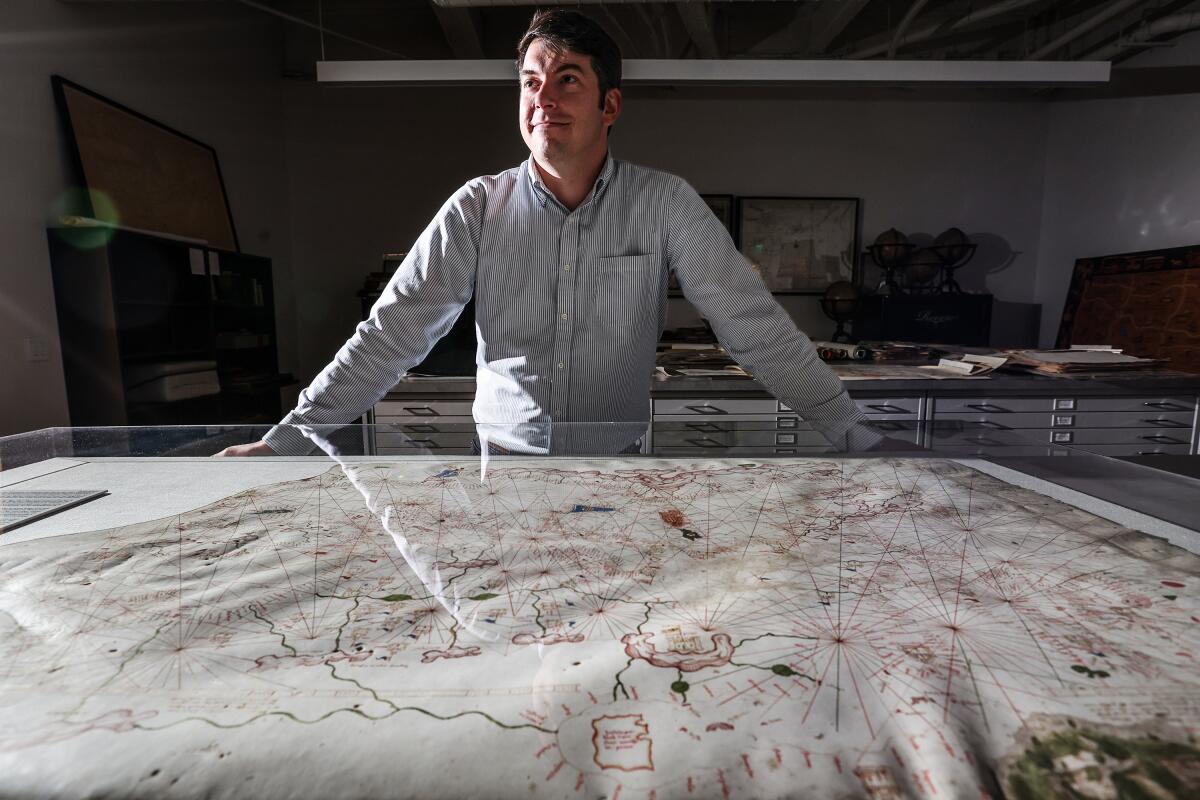The Cruise robotaxi reckoning highlights tensions over self-driving cars and how we regulate them
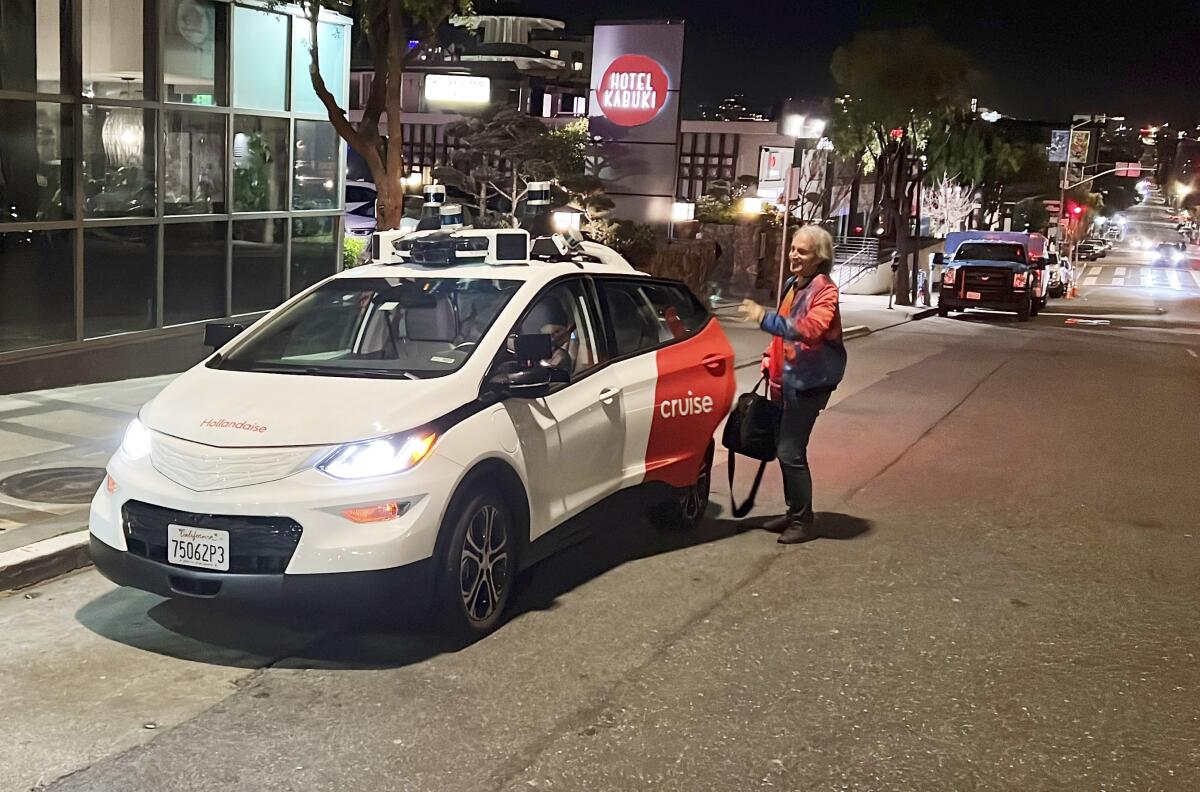
Good morning. It’s Thursday, Oct. 26. Here’s what you need to know to start your day.
- The Cruise robotaxi reckoning highlights tensions over self-driving cars and how we regulate them
- Otter 841 has given birth
- Six unique tacos that could only exist in L.A.
- And here’s today’s e-newspaper
Sign up for Essential California
The most important California stories and recommendations in your inbox every morning.
You may occasionally receive promotional content from the Los Angeles Times.
A robotaxi reckoning
Fleets of robotaxies have been rolling around San Francisco and, more recently, Los Angeles, sparking debates about tech, labor and safety. But one autonomous-vehicle company won’t be picking up passengers in fully autonomous cars for the time being.
This week, the California Department of Motor Vehicles suspended operating permits for GM-owned Cruise, saying the company’s vehicles are “not safe for the public’s operation.”
The company’s permits to test its autonomous technology on public streets and deploy a fleet of robotaxies in the state were both suspended, though Cruise is still allowed to operate vehicles with a human safety driver present.
Robotaxies driving like Tim Robinson have generated traffic headaches in San Francisco — and plenty of headlines about those headaches — over the past year. I’ve also written about them in this newsletter on more than one occasion.
Cruise and Waymo vehicles have blocked intersections and emergency vehicles, driven into construction zones (and into wet cement at least once) and glitched out when traffic cones are placed on them by anti-AV activists.
The suspension is a high-profile incident that highlights the developing conversations over AVs, traffic safety and how to regulate the emerging tech.
Cruise’s step back
The decision stemmed from a collision in San Francisco earlier this month. According to the DMV, an unknown driver who fled the scene struck a woman walking in a crosswalk, knocking her into the path of a Cruise vehicle. The driverless taxi braked hard, but struck and ran over the woman before coming to a stop. It’s what the vehicle did next that contributed to Cruise’s suspension.
The Cruise car performed a pullover maneuver at a top speed of 7 mph with the woman still underneath the vehicle. The vehicle dragged her about 20 feet before coming to a stop.
The San Francisco Chronicle reported that firefighters used the jaws of life to lift the car off the victim, who was hospitalized with traumatic injuries.
The fact that the vehicle continued with the pedestrian trapped underneath was one reason the DMV cited in its suspension orders. The other: that Cruise representatives omitted footage of that pullover maneuver when they presented video recordings of the incident during a meeting with DMV and California Highway Patrol officials. Cruise only showed the AV’s initial collision and DMV officials said they only learned about the second maneuver from another government agency. They requested that footage from Cruise, receiving it 10 days after the initial meeting.
“Cruise’s omission hinders the ability of the department to effectively and timely evaluate the safe operation of Cruise’s vehicles and puts the safety of the public at risk,” DMV staff wrote in their suspension order.
Cruise has denied the DMV’s statements that it omitted footage.
“We met with the DMV on 10/3, in which we showed them the complete video multiple times,” a company spokesperson told me this week. “They later requested a copy of the complete video, which we provided to them.”
The DMV’s order bans Cruise from operating its driverless taxis until the company shows the department that it’s “taken the appropriate action to correct the deficiencies that caused the suspension.” It’s unclear what the DMV will deem appropriate action, though Cruise can request a hearing to contest the suspension.
“Safety is fundamental to our mission to save lives — it’s at the core of everything we do,” Cruise said in a statement. “We are devastated by what happened to the victim, and are committed, as always, to continuously improving our safety — including in response to extremely rare scenarios such as this.”
A bumpy rollout and regulation ‘playing catch-up’
When Juan Matute, deputy director of the UCLA Institute of Transportation Studies, saw the news of Cruise’s suspension, his first reaction was “finally.” He viewed the DMV’s decision as good news for the AV industry at large, because it’s a check on Cruise and other companies that try to scale up too quickly.
“Somebody is going to make a ton of money, and then everybody else is going to lose money,” he told me. “Everybody wants to be first and big, and so those pressures are leading the companies to deploy technologies that perhaps aren’t quite ready yet for a public street.”
Matute is also program manager of the new Center for Excellence on New Mobility and Automated Vehicles Project, a which is funded by the Federal Highway Administration to research emerging mobility technologies and how they might be used to improve transportation systems in the U.S.
How those emerging technologies are regulated (or not) is a big piece of Matute’s work. He explained that, compared with European countries that invest heavily in “more conservative and more researched” frameworks, regulation in the U.S. “is always going to be playing catch-up.” And the reason why is simple: red-blooded American Capitalism.
“We value more innovation and technology development, commercialization and making money,” he said. “There are different regulatory regimes and approaches that … react differently based on the perception of risk. And in general, the U.S. is more permissive of trying new things, although people don’t always say that about California.”
Matute argued that AVs, if scaled up responsibly, could provide key benefits over human-driven cars, including safer streets.
“We have an epidemic of distracted driving in this country,” he said. “It’s quite evident that a lot of people would rather be on their phones than operating a vehicle. Automated vehicles [provide] the solution to be able to do that safely and still have the mobility that that car provides.”
U.S. streets are plenty dangerous without robotaxies. An estimated 42,795 people were killed on U.S. roads last year. On average, more than 4,000 people died in traffic crashes in California over the last five years.
But even among AV skeptics, not everyone agrees on the merits of the technology and how appropriate regulation looks. And as tech historian Peter Norton argued when I asked him about AVs in March, a more advanced car won’t solve the multifaceted problems caused by cars.
Tech companies and automakers promise “we can make a car-dependent society a sustainable, affordable, equitable and safe society, and they can’t deliver on any of those,” Norton said. “In fact, in every category, they could easily make things much worse.”
Today’s top stories
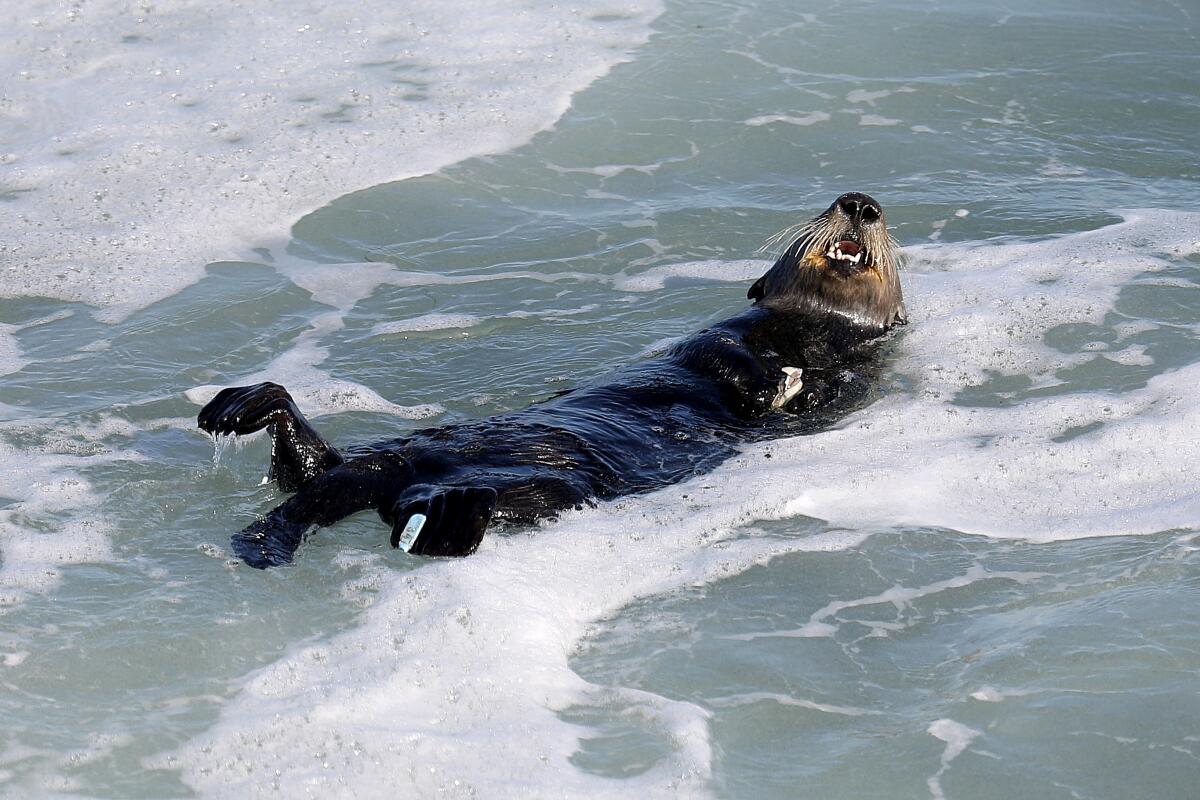
- Otter 841 — the surfboard biting sea otter — has given birth to a fluffy baby sea otter.
War in the Middle East
- This California city is first in the U.S. to officially back Palestinians, and accuses Israel of ‘ethnic cleansing.’
- Muslim parents say LAUSD’s ‘pro-Israel’ statement made their kids targets.
- Israel-Hamas war puts top Democratic Senate candidates’ foreign policy differences in the spotlight.
Climate and environment
- Feds say the Colorado River water cuts are sufficient to stave off immediate risks.
- A stretch of the Central California coast is about to be designated a marine sanctuary. What does that mean?
- U.N. report warns of catastrophic climate tipping points. California is nearing several.
Entertainment
- Nicki Minaj delays ‘Pink Friday 2.’ Fear not, Barbz: It’ll be her ‘biggest gift’ to ‘humanity thus far.’
- Black horror is having a big moment. So is its pioneer, Tananarive Due.
- At 89, Frankie Valli is ready for one last encore.
Sports
- Is Taylor Swift good luck for Travis Kelce? Here’s what he and the stats have to say.
- Nine things to know about the World Series-bound Texas Rangers.
More big stories
- Louisiana’s Mike Johnson replaces Kevin McCarthy as House speaker.
- The driver sped at 104 mph in the Malibu crash that killed 4 Pepperdine students, D.A. says.
- The ‘mansion tax’ prevails in court as a judge dismisses a lawsuit challenging Measure ULA.
- SAG-AFTRA and major studios meet again Wednesday in an effort to bridge the divide.
- Police aren’t doing enough to find missing Boyle Heights teen, her family says.
- Prosecutors fear that the LAPD gang unit scandal could jeopardize more than 300 cases, sources say.
- L.A. County supervisors were ‘disheartened,’ ‘disturbed’ by the restraint rates at L.A. General.
- Green Gold Land: Two Chinese immigrants hope for a brighter future in the cannabis cultivation industry, but their journey unfolds bitterly.
Get unlimited access to the Los Angeles Times. Subscribe here.
Commentary and opinions
- Opinion: Brace yourself. Streaming platforms are going to remove a lot more shows.
- Letter to the Editor: Republicans, Trump is about to turn on you. Your ‘come to Jesus’ moment is now.
- Robin Abcarian: Don’t grow all the way up, it’s a trap!
- Michael Hiltzik: How Walgreens, CVS and Rite Aid tried to take over healthcare — and failed.
- Bill Shaikin: Trevor Bauer wants back in the majors. Will any team even consider signing him?
Today’s great reads
A $7.5-million find: Overlooked Getty estate sale map turns out to be 14th century treasure. Map dealer Alex Clausen has made some impressive discoveries over the years, like getting his hands on the original drawings for the Statue of Liberty. But nothing, he said, compares to the $7.5-million find he came across last fall.
Other great reads
- How a new complex of houses-turned-restaurants is changing this ‘forgotten edge’ of Chinatown.
- L.A. used to be awash in beauty pageants. Where’d they go?
- Spanish-language radio icon María Elena Nava returns to KLVE and her loving listeners.
- Each item placed on an ofrenda has a special meaning that dates back to Indigenous cultures.
How can we make this newsletter more useful? Send comments to [email protected].
For your downtime
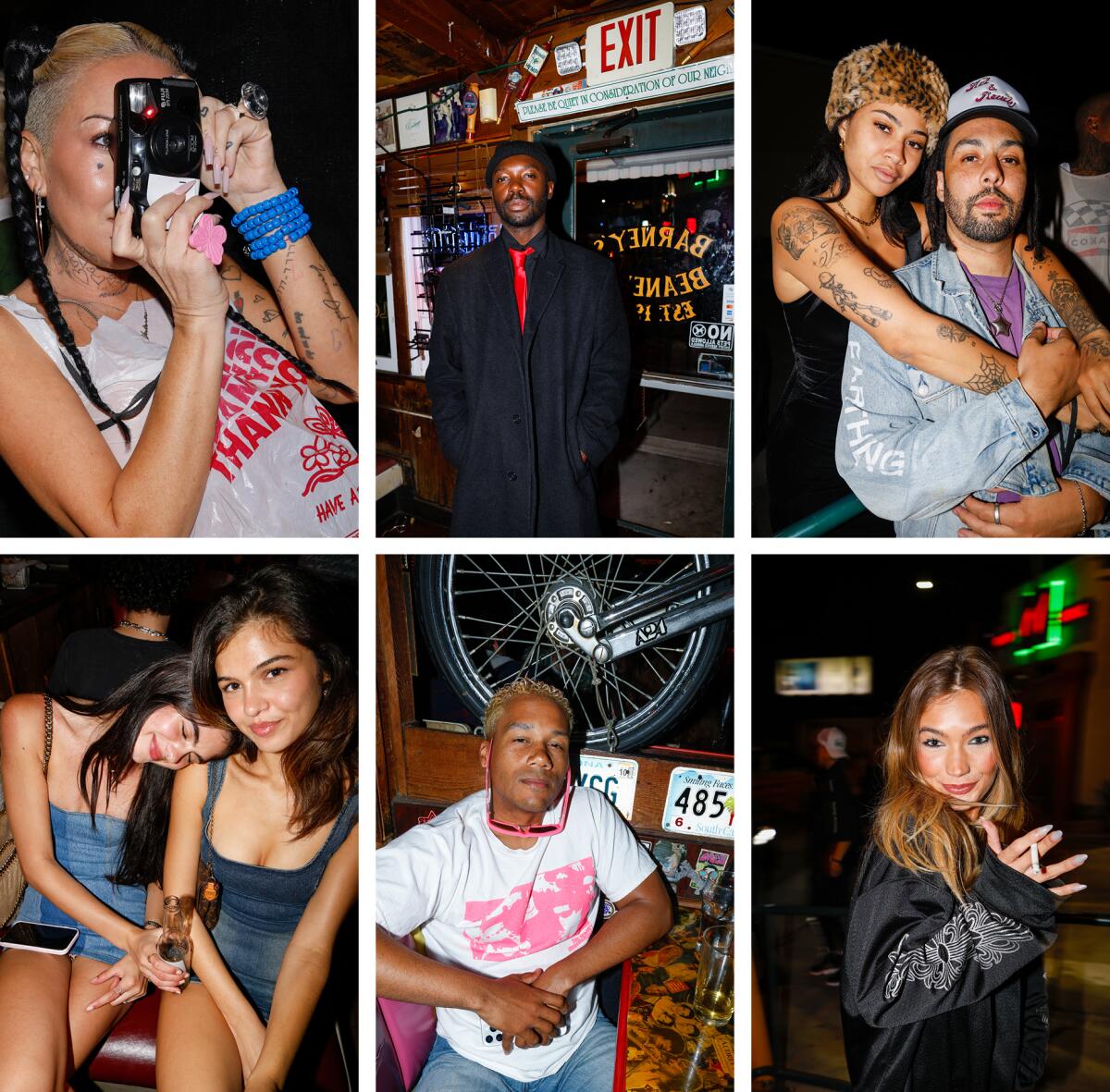
Going out
- 🍻 The hot Gen Z bar in L.A. is Barney’s Beanery — a 103-year-old institution.
- 🦑🏃‘Squid Game’ in real life? The competition is coming to L.A. — and you can be part of it.
- 🌮 6 unique tacos that could only exist in Los Angeles.
Staying in
- 📚 6 books to get you started with Black horror, classic and new.
- 🎮 The dose of self-care you didn’t know you needed? Playing the new ‘Super Mario Bros. Wonder.’
- 📺 ‘Everyone Else Burns’ is a dysfunctional family comedy you can believe in.
- 🍠 Here’s a recipe for guava mole with chicken and roasted sweet potatoes.
- ✏️ Get our free daily crossword puzzle, sudoku, word search and arcade games.
And finally ... from our archives
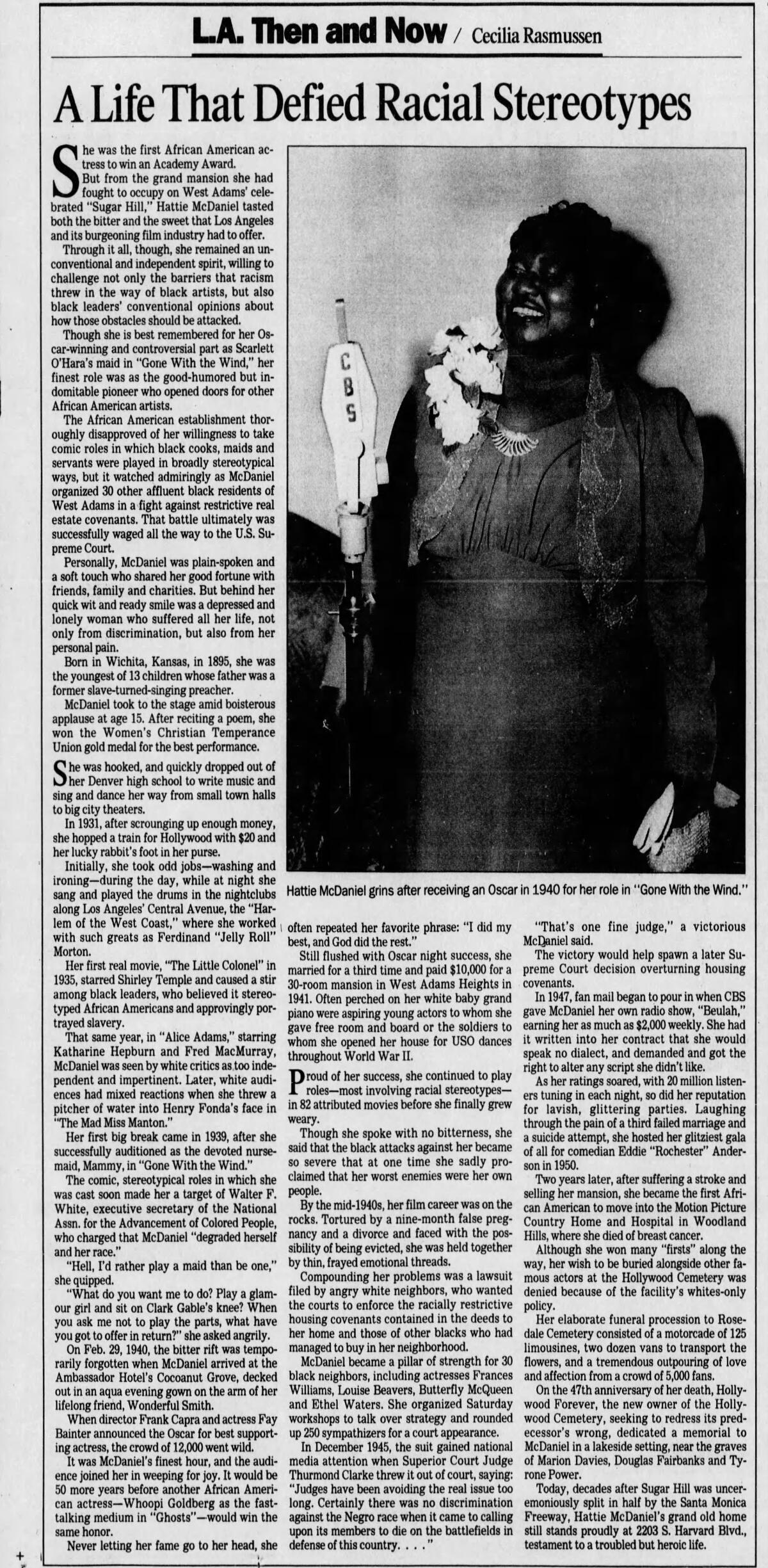
On this day 71 years ago, Hattie McDaniel — the first African American to win an Academy Award — died. Though she is best remembered for her Oscar-winning and controversial part as Scarlett O’Hara’s maid in “Gone With the Wind,” her finest role was as the good-humored but indomitable pioneer who opened doors for other African American artists.
Have a great day, from the Essential California team
Ryan Fonseca, reporter
Helen Li, reporting fellow
Elvia Limón, multiplatform editor
Kevinisha Walker, multiplatform editor
Laura Blasey, assistant editor
Karim Doumar, head of newsletters
Check our top stories, topics and the latest articles on latimes.com.
Sign up for Essential California
The most important California stories and recommendations in your inbox every morning.
You may occasionally receive promotional content from the Los Angeles Times.
